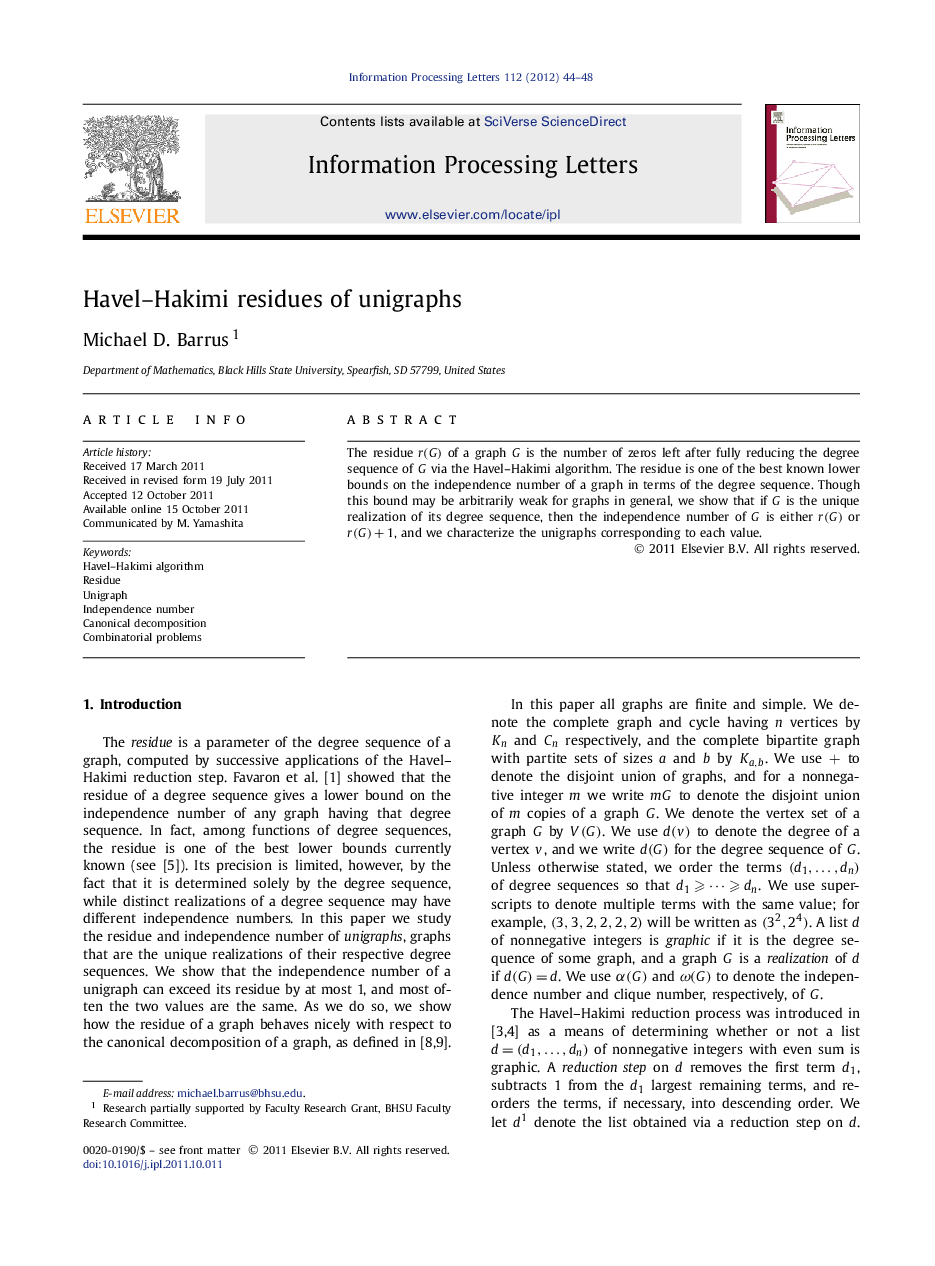| Article ID | Journal | Published Year | Pages | File Type |
|---|---|---|---|---|
| 427273 | Information Processing Letters | 2012 | 5 Pages |
The residue r(G)r(G) of a graph G is the number of zeros left after fully reducing the degree sequence of G via the Havel–Hakimi algorithm. The residue is one of the best known lower bounds on the independence number of a graph in terms of the degree sequence. Though this bound may be arbitrarily weak for graphs in general, we show that if G is the unique realization of its degree sequence, then the independence number of G is either r(G)r(G) or r(G)+1r(G)+1, and we characterize the unigraphs corresponding to each value.
► We compare Havel–Hakimi residues and independence numbers for unigraphs. ► We show how the residue behaves in relation to the canonical decomposition of a graph. ► The independence number of a unigraph is either equal to or 1 more than its residue.
